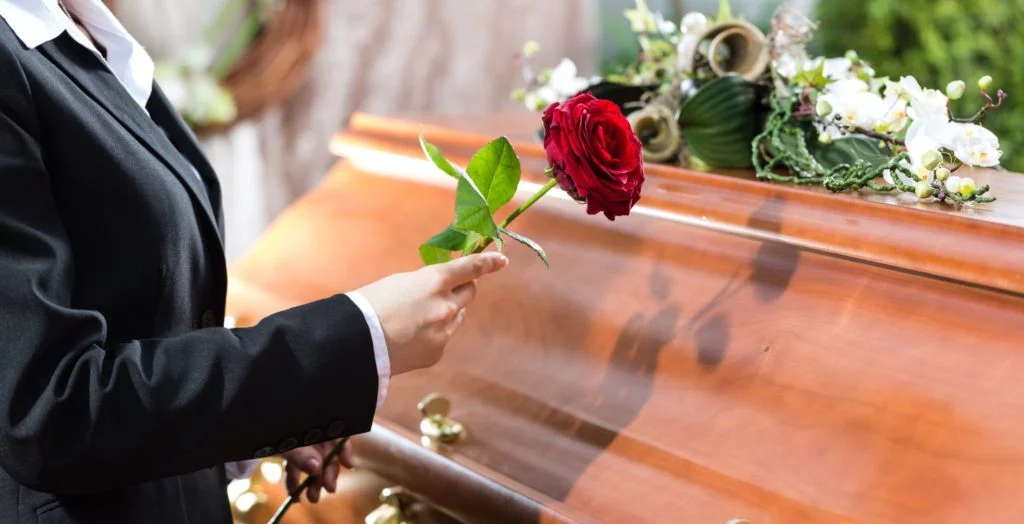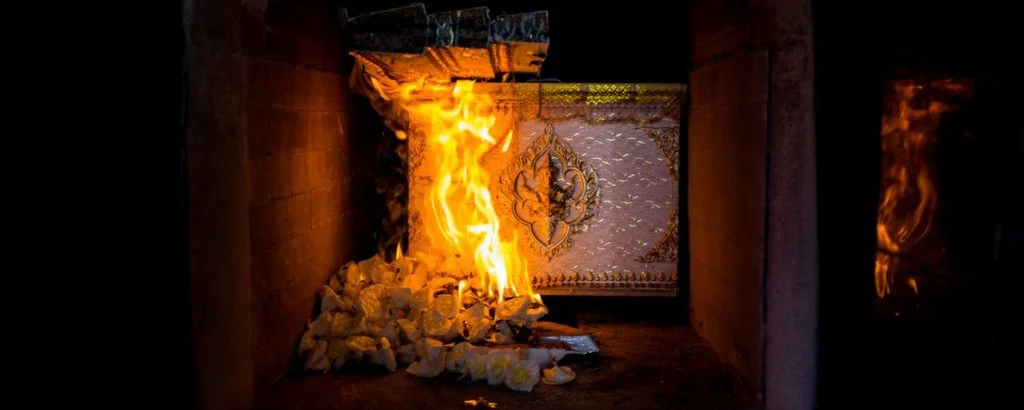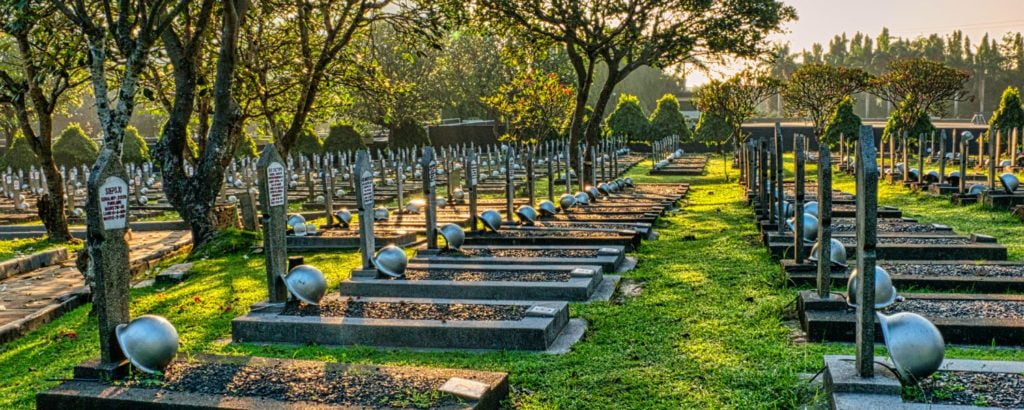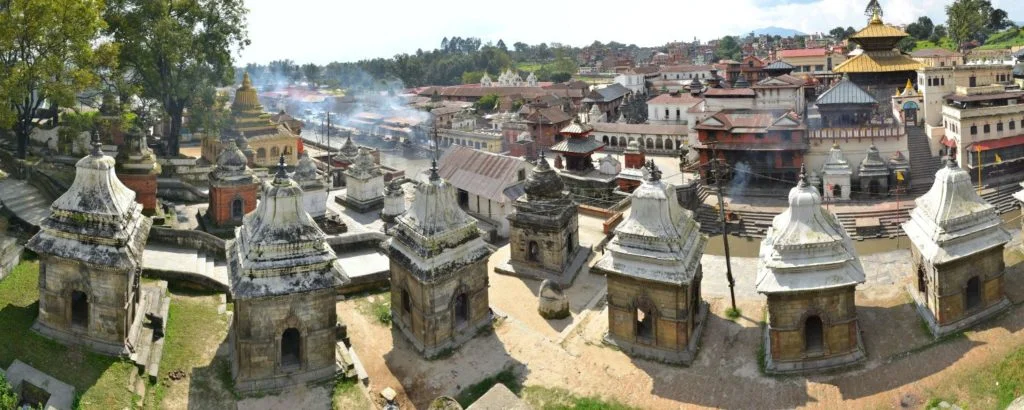
The choice between burial vs cremation has long been debated regarding end-of-life decisions. Both options offer distinct advantages and drawbacks that can influence one’s decision-making process. Burial provides a tangible place for remembrance and grieving, while cremation offers flexibility in the location of the final resting place. In this exploration of burial vs. cremation, we aim to examine the key factors involved in making this decision. By analysing the pros and cons of burial vs cremation, individuals can gain a deeper understanding of the significance and choose the method that best aligns with their cultural, personal, and environmental values.
What is Cremation?

Cremation is the disposition process of the deceased by reducing their remains to ashes through intense heat and combustion. The practice has been used for centuries across various cultures and religions. Typically, the deceased is placed in a specially designed furnace called a cremator at temperatures ranging from 800 to 1,000 degrees Celsius. The high heat rapidly reduces the deceased to their basic elements, leaving behind bone fragments. These fragments are further refined into fine ashes, known as cremains. Cremation offers an alternative to traditional burial and provides a means of memorialising the departed.
Let us explore the pros and cons associated with cremation.
Pros
1. Flexibility in Memorialisation Options
Cremation offers many choices when memorialising the departed. The ashes are placed in an urn, allowing for portability and the option to keep them close to family members. Alternatively, ashes can be scattered in a meaningful location or used in various memorialisation practices, such as incorporating them into jewellery or artwork.
2. Lower Environmental Impact
Cremation has a relatively lower environmental impact than a traditional burial. It requires fewer resources, does not contribute to land use for burial plots, and avoids the use of embalming chemicals that can seep into the soil. For those concerned about the ecological footprint, cremation presents a more environmentally conscious choice compared with traditional burials. However, a green (eco) burial is the lowest-impact disposal method.
3. Portability of Ashes
One advantage of cremation is the ability to keep the ashes in an urn, allowing family members to easily transport them if they relocate or wish to take the remains to a significant location. This flexibility can provide comfort and connection to the departed, regardless of geographical distance.
4. Personalised Memorial Ceremonies
Cremation offers greater flexibility in planning memorial ceremonies. Families can design personalised services that reflect the unique life and personality of the deceased. It includes choosing the location, selecting meaningful rituals, and incorporating creative elements to honour the person’s memory.
Cons
1. Lack of a Physical Gravesite
One significant disadvantage of cremation is the absence of a physical gravesite for loved ones to visit and pay their respects. Some individuals find solace in having a dedicated location to remember their departed family member or friend. Without a physical marker, the grieving process may feel less tangible for those who find comfort in visiting a gravesite.
2. Cultural and Religious Considerations
In the case of burial vs cremation. Cremation may not align with specific cultural or religious beliefs. In some traditions, burial is considered the preferred method of disposition, and deviating from this practice may conflict with deeply held beliefs. It is crucial to respect cultural and religious customs when making end-of-life choices.
3. Decision-Making for Family Members
In cases where individuals have not expressed clear preferences regarding their end-of-life choices, the decision to opt for cremation vs burial may burden surviving family members. Disagreements or uncertainty can arise, potentially adding emotional strain during a challenging time.
4. Potential Difficulty in Memorialisation
While cremation offers flexibility, some individuals may find it difficult to determine how best to honour the memory of the deceased using ashes. With clear guidance and a pre-established plan, family members may be able to find a proper way to memorialise and pay tribute to their loved ones.
What is Burial?

Burial is a traditional method of laying a deceased person to rest, involving the interment of the body in the ground or a burial vault. It is common across cultures and religions, often accompanied by specific rituals and ceremonies. The body is typically prepared and placed in a casket, then lowered into a grave at the cemetery. The grave is carefully sealed and marked with a headstone or marker to memorialise the departed. Burial is a physical connection to the deceased and provides a designated place for loved ones to visit, pay respects, and find solace.
Let us explore the pros and cons associated with this choice.
Pros
1. Tradition and Cultural Significance
Burial carries a long-standing tradition and cultural significance in many societies. It can provide a sense of continuity, connection to one’s heritage, and comfort through adherence to cultural or religious practices.
2. Physical Gravesite for Remembrance
One significant advantage of burial is the provision of a physical gravesite that serves as a focal point for mourning and remembrance. Loved ones can visit the site, leave flowers or mementoes, and find solace in having a specific place to connect with the departed.
3. Emotional Closure
Burial can offer emotional closure for family members. Laying the deceased to rest on the earth may symbolise the finality of death, aiding in the grieving process. For some, the tangible nature of burial brings a sense of peace and provides a space for ongoing connection with the deceased.
4. Adherence to Religious Beliefs
Burial aligns with various religions’ burial customs and practices. For individuals with strong religious beliefs, burial can be seen as a sacred duty and an act of reverence for the deceased.
Cons
1. Land Use and Space Limitations
Burial requires dedicated land for grave sites, which can contribute to land use concerns in densely populated areas. Limited space availability in certain cemeteries can pose challenges when selecting a burial plot.
2. Environmental Lmpact
Traditional burial has environmental implications. Embalming, a common burial practice, involves chemicals that can seep into the soil and potentially impact surrounding ecosystems. The maintenance and care of gravesites may also require resources and contribute to land use concerns. However, a green (eco) burial is the lowest-impact disposal method.
3. Limitations on Mobility
Choosing burial means committing to a specific location for the resting place. This may limit family members’ ability to relocate or present challenges if future generations wish to honour or visit the gravesite but live far away.
4. Emotional Challenges Related to Decay
The idea of the body decaying over time within the earth can be emotionally challenging for some individuals. The thought of the physical remains undergoing decomposition can evoke discomfort or distress.
How Much Does Cremation Cost vs Burial?

Cremation vs burial costs are significant considerations when making end-of-life arrangements. Generally, cremation tends to be more cost-effective than traditional burial. Cremation costs typically involve cremation, transportation, permits, and documentation. Additional expenses may include an urn, funeral, or memorial service. On the other hand, burial expenses can encompass embalming (not always required), casket selection, cemetery plot, headstone, grave opening and closing, and funeral services. However, it’s important to note that costs can vary based on location, service providers, and personal choices. Considering one’s budget and financial circumstances, individuals can make decisions that align with their preferences, cultural practices, and ability to meet the associated expenses.
Conclusion
In the discussion of burial vs cremation, it becomes clear that there is no same solution for everyone. The decision ultimately rests on individual preferences, cultural beliefs, environmental considerations, and personal circumstances. Burial offers a sense of physical connection and a dedicated space for remembrance, while cremation provides flexibility and potential environmental benefits. Understanding all the major pros and cons of burial vs cremation empowers individuals to make informed choices honouring their values and beliefs. Regardless of the path chosen, what remains essential is the opportunity to remember and honour the departed while finding solace and closure in the chosen method of saying goodbye.
 "/>
"/>
